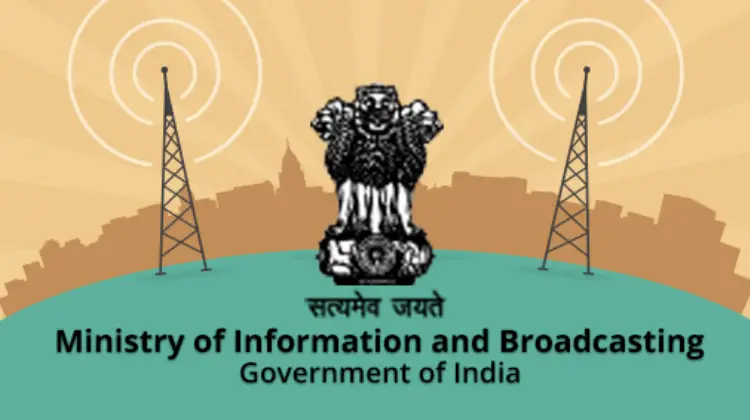In a monumental shift poised to revolutionize India’s television and digital audience measurement landscape, the Ministry of Information and Broadcasting (MIB) has effectively “opened up” the Television Rating Point (TRP) market. Through significant amendments to its “Policy Guidelines for Television Rating Agencies in India,” released in a draft order on July 2, 2025, the MIB has cleared the path for a wider array of players – including Over-The-Top (OTT) platforms, Distribution Platform Operators (DPOs), and even global Big Tech firms – to establish and operate their own ratings agencies. This move is set to intensify competition, foster innovation, and provide a more comprehensive and accurate picture of India’s evolving media consumption habits.
For years, the Broadcast Audience Research Council (BARC) India has largely held a monopoly in television viewership measurement. However, the MIB’s latest reforms directly address this, aiming to democratize the industry and encourage the influx of new technologies and methodologies, particularly for cross-screen and digital measurement. The Ministry has invited public and stakeholder feedback on these proposed changes within a 30-day window, signaling a collaborative approach to finalising the new framework.
Key Amendments Paving the Way for New Entrants:
The most impactful changes introduced by the MIB’s draft amendment order include:
- Deletion of Restrictive Clauses (1.5 and 1.7): Previously, Clause 1.5 prohibited board members of television rating companies from having any involvement in broadcasting, advertising, or media buying businesses. Even more critically, Clause 1.7 imposed strict restrictions on “substantial equity cross-holdings” (defined as 10% or more) between rating agencies and broadcasters/advertisers/advertising agencies, as well as between multiple rating agencies. The removal of these clauses is a game-changer, eliminating significant entry barriers and allowing greater ownership flexibility. This directly enables entities with existing stakes in media and advertising to now invest in or establish their own rating agencies.
- Mandatory Indian Company Registration: While removing certain restrictions, the MIB has tightened others. Clause 1.1 now mandates that any applicant seeking registration for providing television rating services must be a company registered in India under the Companies Act, 2013, ensuring operations within India’s corporate legal framework.
- Prohibition on Consultancy/Advisory Roles: To safeguard impartiality, Clause 1.4 has been amended to explicitly prohibit rating agencies from undertaking any activity like consultancy or advisory roles that could lead to a potential conflict of interest with their primary objective of audience measurement. This aims to ensure the integrity and unbiased nature of the ratings data.
- Emphasis on Multi-Screen and Digital Measurement: The MIB has acknowledged critical gaps in the existing system, noting that it “does not track connected TV device viewership, despite it being a major trend” and fails to “sufficiently capture viewership on emerging platforms such as smart TVs, streaming devices, and mobile applications.” The new guidelines are designed to facilitate robust measurement across all platforms, aligning with modern TV viewing habits.
- Increased Panel Size and Transparency: The draft guidelines also propose a significantly larger panel base, requiring an initial panel size of at least 20,000 households within six months of registration, expanding to 50,000 annually. This aims to ensure a more representative sample across India’s diverse demographics. Furthermore, there’s an increased focus on transparency, with requirements for public disclosure of methodology, ownership structure, and audit reports.
Impact on the Ecosystem:
This liberalized environment is expected to have several profound impacts:
- Intensified Competition: The market, previously dominated by BARC, is set for a surge of new players. This heightened competition is anticipated to drive innovation in measurement methodologies, improve data accuracy, and potentially lead to better pricing for media buyers and advertisers.
- Focus on Digital and Cross-Platform Data: With OTTs and Big Tech now able to enter, there will be a strong impetus to develop sophisticated tools for measuring digital consumption, a critical gap in current TRP data. This will provide advertisers with more holistic insights into multi-screen viewing behavior.
- Concerns over Fragmentation: While largely welcomed, some industry experts caution that a proliferation of agencies might lead to fragmented data and inconsistent methodologies, potentially diminishing the credibility of overall viewership figures. “Many cooks spoil the soup,” one observer noted, emphasizing that “trust will matter more than ever” for brands relying on rating data.
The MIB’s bold move underscores the government’s commitment to modernizing the media measurement ecosystem to reflect India’s dynamic digital transformation. The final guidelines, shaped by the ongoing public consultation, will undoubtedly redefine how India tracks and monetizes its vast and diverse television and digital audiences.
Key Highlights:
- The MIB has opened up India’s TRP market, allowing OTT platforms, DPOs, and Big Tech companies to establish their own ratings agencies through new draft amendments released on July 2, 2025.
- Key changes include the removal of restrictive clauses (1.5 and 1.7) that previously barred cross-holdings and board memberships in related media businesses, enabling broader industry participation.
- The amendments also mandate Indian company registration for all rating agencies and prohibit consultancy roles to prevent conflicts of interest, while emphasizing comprehensive multi-screen and digital audience measurement.
- This move aims to increase competition, drive innovation in measurement technologies, and provide more accurate data, though some industry experts express concerns about potential data fragmentation.

